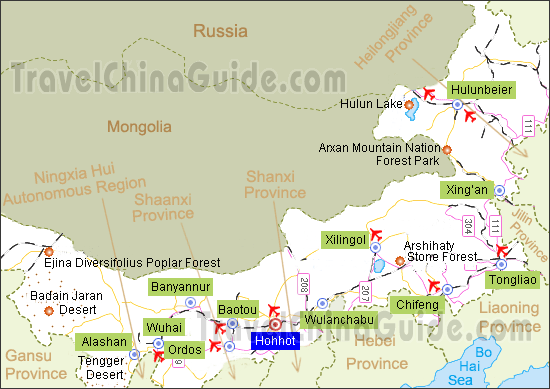
Proponents of wind turbine energy
tout its environmental advantages over fossil fuel energy sources that produce
carbon dioxide emissions.
But what they don't talk about is
the vast amount of radioactive waste and other toxic substances resulting from
the mining of the rare earth minerals needed by wind turbines, according to a
disturbing report from two energy experts.
 |
| Baotou, China is near Hohhot |
Wind turbines use magnets made with
neodymium and dysprosium, rare earth minerals mined almost exclusively in China, reported Travis
Fisher and Alex Fitzsimmons, policy associates with the Institute for Energy
Research.
An MIT study estimated that a
2-megawatt wind turbine contains about 752 pounds of rare earth minerals.
| Baotou, China |
Simon Parry of Britain's Daily
Mail traveled to Baotou in northern China to view the mines, factories, and
dumping grounds associated with China's rare earth industry, including a
5-mile-wide lake of industrial waste.
| Dumping rare earth by products in Baotou, China |
"This vast, hissing cauldron
of chemicals is the dumping ground for 7 million tons a year of mined rare earth
after it has been doused in acid and chemicals and processed through red-hot
furnaces to extract its components," Parry wrote.
"Rusting pipelines meander for
miles from factories processing rare earths in Baotou out to the man-made lake
where, mixed with water, the foul-smelling radioactive waste from this
industrial process is pumped day after day."
As the lake of waste grew larger,
local farmers told Parry, "anything we planted just withered, then our
animals started to sicken and die."
Residents of a nearby village said
their teeth began to fall out, their hair turned white at young ages, and they
suffered from severe skin and respiratory diseases. Children were born with
soft bones and the incidence of cancer and osteoporosis soared, the Mail
reported.
The lake's radiation levels are 10
times higher than in the surrounding countryside, official studies found.
In Baotou, most people wear face
masks wherever they go, Parry noted.
Last year the United States added
13,131 megawatts of wind-generating capacity, and at least 4.9 million pounds
of rare earths were used in the turbines installed in 2012. That means at least
4.9 million pounds of radioactive waste were created to make those turbines.
In comparison, the U.S. nuclear
industry produces between 4.4 and 5 million pounds of spent nuclear fuel each
year. So the U.S. wind industry most likely created more radioactive waste last
year than America's entire nuclear industry — while accounting for just 3.5
percent of all electricity generated in the country.
And the MIT study revealed that the
demand for dysprosium could rise by 2,600 percent in the next 25 years as the
wind industry grows, the Rightside News authors warn.
They conclude: "All forms of
energy production have some environmental impact. However, it is disingenuous
for wind lobbyists to hide the impacts of their industry while highlighting the
impacts of others.
"From illegal bird kills to radioactive waste, wind energy
poses serious environmental risks that the wind lobby would prefer you never know
about."
Changing gears, wood-burning stoves offer warmth and enhance off-grid living options during cold weather months, but the tried-and-true heating devices now are under attack by the Environmental Protection Agency. The EPA has banned the production and sale of the types of stoves used by about 80 percent of those with such stoves. The regulations limit the amount of “airborne fine-particle matter” to 12 micrograms per cubic meter of air. The current EPA regulations allow for 15 micrograms in the same amount of air space.
Most of the wood stoves currently nestled inside cabins and homes from coast-to-coast don’t meet the new environmental standard. The EPA launched a “Burn Wise” website to help convince the public that the new regulations were needed. Trading in an old stove for a newer stove isn’t allowed. “Replacing an older stove with a cleaner-burning stove will not improve air quality if the older stove is reused somewhere else,” the website says. “For this reason, wood stove change out programs usually require older stoves to be destroyed and recycled as scrap metal, or rendered inoperable.”


No comments:
Post a Comment